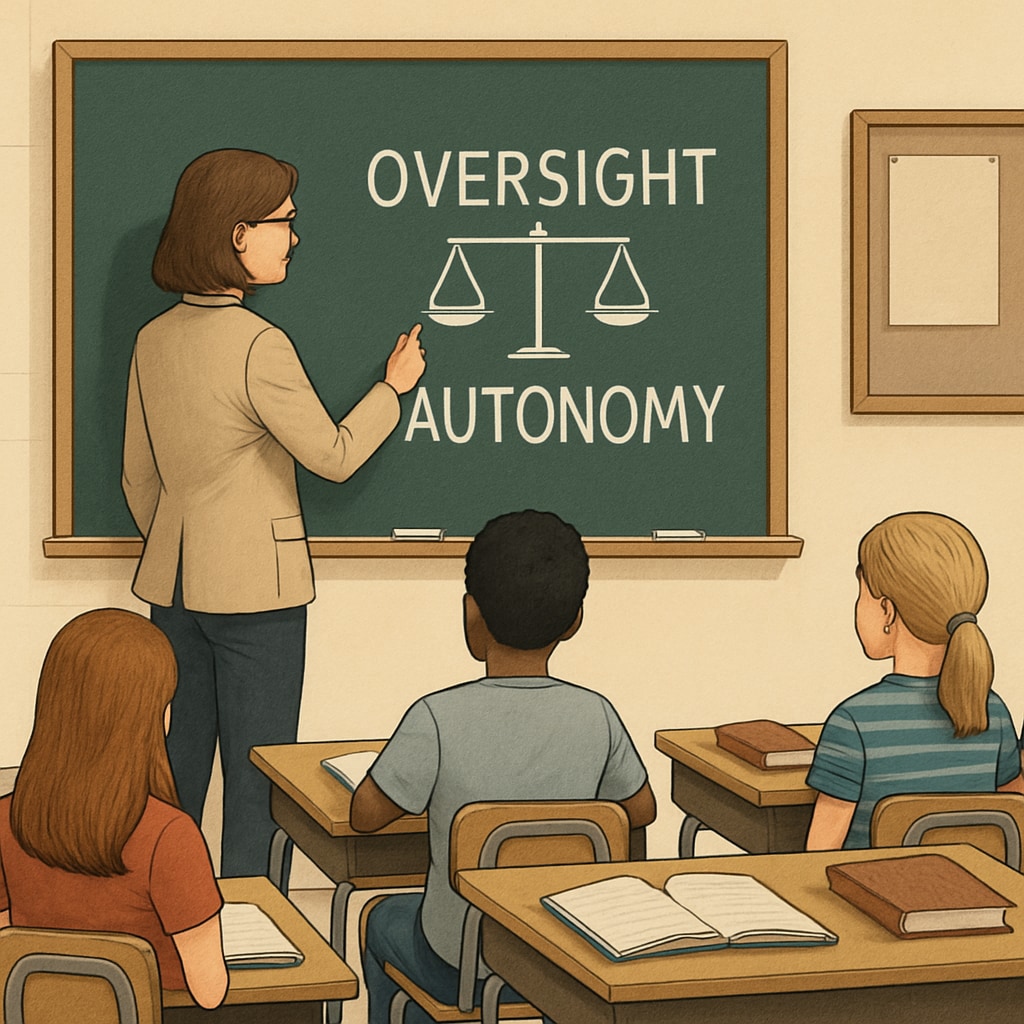The Heritage Foundation’s Project 2025 has recently ignited debates surrounding academic independence in higher education and its implications for K-12 classrooms. This initiative, which calls for greater transparency in university course content, has sparked questions about the fine line between educational autonomy and external oversight. How can schools ensure academic freedom while addressing calls for greater accountability? This balancing act forms the crux of an ongoing and heated conversation in education policy.

The Debate Over Transparency and Academic Freedom
Project 2025, spearheaded by the Heritage Foundation, advocates for a more transparent educational system. Proponents argue that public accountability is essential, especially in publicly funded institutions. They believe that making course content publicly available can ensure that schools are not promoting biased ideologies or neglecting essential skills.
However, educators and academic institutions have raised concerns about how such transparency might infringe upon academic freedom. Critics argue that external oversight could lead to self-censorship, where educators avoid controversial but vital topics for fear of public backlash. This could stifle critical thinking and the diversity of thought, which are hallmarks of quality education.
For example, a report from the Encyclopedia Britannica explains that academic freedom allows educators to teach and discuss ideas without external interference. Striking a balance between this freedom and the desire for accountability is critical to ensuring both educational quality and public trust.
Implications for K-12 Education
While the focus of Project 2025 is primarily on higher education, its principles could easily cascade into K-12 classrooms. The push for transparency may lead to similar oversight mechanisms in primary and secondary education, raising new challenges for teachers and administrators. For instance, K-12 educators might face increased scrutiny over curriculum choices, teaching methods, and classroom discussions.
Parents and advocacy groups have long argued for greater involvement in what is taught in schools. In recent years, debates over issues like critical race theory and gender education have highlighted the tensions between educational institutions and external stakeholders. While parents’ involvement is essential, excessive oversight could undermine the professional autonomy of educators, discouraging talented individuals from pursuing teaching careers.

Striking a Balance: A Path Forward
So how can educational institutions and policymakers find a middle ground? Here are a few potential strategies:
- Transparent Policies: Schools could adopt clear guidelines for curriculum development, ensuring that both educators and external stakeholders understand the principles shaping classroom instruction.
- Stakeholder Engagement: Creating forums for dialogue between educators, parents, and policymakers could help build trust and mutual understanding.
- Professional Development: Providing teachers with resources to navigate controversial topics can empower them to maintain academic freedom while addressing community concerns.
- Independent Reviews: Establishing neutral panels to review curriculum decisions could help balance transparency with academic independence.
Ultimately, the goal should be to foster an educational environment where freedom of thought and accountability coexist. As the Wikipedia entry on academic freedom suggests, a nuanced approach is key to preserving the integrity and quality of education.
Conclusion
The Heritage Foundation’s Project 2025 has reignited a critical conversation about the role of oversight in education. While transparency and accountability are vital, they should not come at the expense of academic freedom. For K-12 classrooms, finding this balance will require collaboration, open dialogue, and a shared commitment to educational excellence.
As debates continue, one thing remains clear: the future of education lies at the crossroads of freedom and oversight. Policymakers, educators, and communities must work together to ensure that schools remain spaces for open inquiry, critical thinking, and the pursuit of knowledge.
Readability guidance: This article uses short paragraphs, clear transitions, and bullet points to enhance readability. It avoids excessive use of passive voice and overly long sentences, making complex issues accessible to a broad audience.


